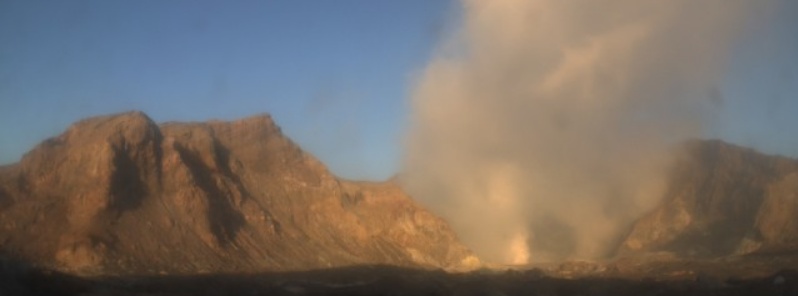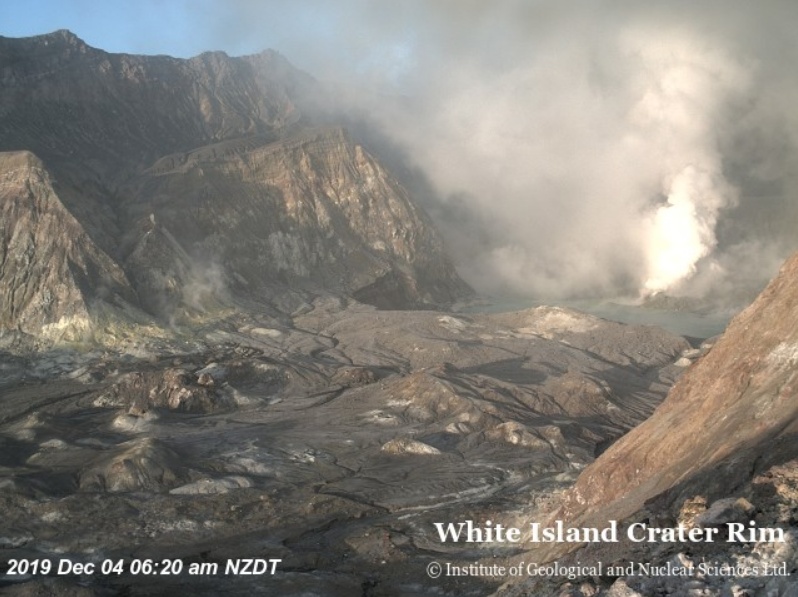Explosive gas and steam-driven mud jetting continues at White Island’s crater lake, New Zealand

Moderate volcanic unrest continues at New Zealand's Whakaari/White Island, with substantial gas, steam and mud bursts observed at the vent located at the back of the crater lake. Other monitoring parameters remain elevated and the Volcanic Alert Level stays at Level 2, GNS Duty Volcanologist Brad Scott notes. The Aviation Color Code remains at Yellow.
Explosive gas and steam-driven mud jetting continues from the active vent area at the back of the crater lake. The level of activity at the vent is variable and when in a stronger phase, some material is being deposited about the vent area. This style of activity has been present since late September 2019, although it is occurring more frequently now. No volcanic ash is being produced, Scott said.
Volcanic gas emission and seismic activity continue to remain elevated.
Occasional gas smell may have been noted on the North Island mainland, pending on the dominant wind direction. Volcanic tremor also remains at moderate levels in the last week, with some periodic variations, matched with episodes of increased gas-steam jetting and fountaining.
The water level of the crater lake has not changed for the last week, and gas/steam-driven mud fountaining activity continues to be observed from the active vent area on the west side of the 1978/90 Crater Complex, near the 2012 lava dome, at the back of the crater lake.

This fountaining is regularly throwing mud and debris 20 – 30 m (65 – 100 feet) into the air above the vent. The level of activity is variable and remains within the range expected for moderate volcanic unrest. While the activity is contained to the far side of the lake, the current level of activity does not pose a direct hazard to visitors.
Overall, the monitored parameters continue to be in the expected range for moderate volcanic unrest and associated hazards exist. The monitoring observations bear some similarities with those seen during the 2011-2016 period when Whakaari/White Island was more active and stronger volcanic activity occurred.
Observations and data to date suggest that the volcano may be entering a period where eruptive activity is more likely than normal, Scott concludes.
Geological summary
White Island is a mostly ice-covered volcanic complex at the northern end of the island consisting of two shield volcanoes and overlying pyroclastic cones.
The youngest Potassium-Argon date obtained was 0.17 million years ago and there is no evidence of Holocene activity.
Featured image credit: GNS

Good article BUT the Geological summary is incorrect. It is not Ice Covered, and has been active during the Holocene. Further detail here:
https://www.gns.cri.nz/Home/Learning/Science-Topics/Volcanoes/New-Zealand-Volcanoes/Volcano-Geology-and-Hazards/White-Island-Geology